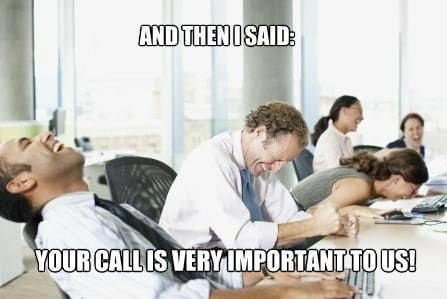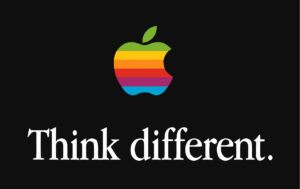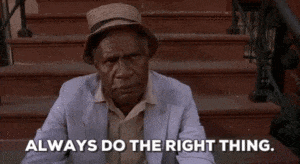
Seems like such a silly thing to say these days. Of course, marketing has to be customer-centric. Or am I assuming too much? I think I might just be.
After all, why would so many companies, B2B and B2C, be creating so much noise that clearly doesn’t have the customer’s needs in mind?
We’ve been doing this podcast series called the Wellspring Digital Chat since the start of this pandemic. It’s the Perfect Pandemic Podcast! ALLITERATION!
Sorry, it’s been a long day, week, month, year. But isn’t that the point? People are stressed. There’s no shortage of anxiety and fear to go around, and still some marketers see the need to bombard people with noise. Why?
Good question. Sorry, tangent. Back to my point…
Empathy and Zach Messler’s Favorite Word, Authenticity
Anyway, on the podcast, the word “empathy” comes up again and again. My most recent guest, Zach Messler, had this to say…
“It’s becoming your audience, being able to put on their glasses, walk around in their shoes, pick your favorite cliche about perspective, but taking on their perspective, and understanding it, not just knowing it, but really understanding it. There’s nuance to that.
There’s nuance to how people speak, there’s nuance to what people want. And if you don’t have that perspective, and if you don’t make the effort to get that perspective, then you’re not going to know it. And if you don’t know it, then you’re not authentic.
I hate that word. I was listening to an earlier podcast when you had Scott Stratten and you guys were talking a little about authenticity upfront. But it’s true. If you’re not taking on that perspective of your audience, and doing it purposefully, then you’re just selling shit.” – Zach Messler, Product Marketing Magician
There’s nothing wrong with “selling shit” to a certain extent. If all you do is “sell shit” then you have no community, you have no fanbase, and you will struggle to make any headway.
The more you just “sell shit” the harder your marketing and sales efforts will become. (sorry mom for all the cursing)
So, while empathy might seem all touchy-feely and like a daunting task, it actually just makes good business sense.
I’m Going to Give Steve Jobs Praise
Anyone who knows me knows that I am not an Apple fanboy. In fact (warning, name drop coming), I had the privilege of interviewing Steve Wozniak at a Digital Summit conference a few years back. I miss conferences!

Anyway, I mentioned to Woz in the green room that I was not an “Apple fanboy” and he said, “good, neither am I.”
I mention this not in a lame effort to name drop, well, not solely for that purpose. I mention it because my fandom doesn’t matter. I’m not Apple’s target customer. Apple is simply not for me and that’s OK. It’s not supposed to be.
StoryBrand and the Transformation of Steve Jobs
There’s a book out, maybe you’ve heard of it. It’s called Building a StoryBrand: Clarify Your Message So Customers Will Listen and it’s by Donald Miller. It’s a great book if you’re one of the few people who have not yet read it.
An example of the power of storytelling from the book is also a great example of the power of empathy. I’m going to seriously paraphrase here so get the book if you want the full story.
Donald Miller describes how Jobs, during his first stint at Apple, was looking to market one of its first machines, called “Lisa.” He took out a 9-page ad in the New York Times. 9 freakin pages!
In it, they outline all the stuff that someone like Woz would geek out about, specs and technical jargon. It was a colossal failure. Remember, Woz is not a fanboy. He’s a geek. And those are not the customers that Jobs was after.
The Jobs Awakening
It wasn’t until Jobs came back to Apple later after his time with Pixar that he understood the importance of empathy and storytelling. Miller makes the point that Jobs’s time at Pixar impressed upon him the power of storytelling. And the hero in Jobs’s new story is the archetypal Apple fan.
Here’s the ad he ran after his time at Pixar…

One page, two words: Think Different. At the time, IBM was running a campaign using the word “Think.” One word made all the difference. Pun intended.
Jobs knew his audience wanted to be special, different, a unique group of creatives and challengers of the status quo.
Jobs was not longer selling the steak and he really wasn’t even selling the sizzle. He was selling the experience, connection, emotion. He was selling rebellion.
Google E-A-T Vs. Digital Marketing E-A-T
Google E-A-T
If you’re not familiar yet with Google E-A-T, definitely read this post and watch our interview with Lily Ray, an E-A-T expert.
Here’s the short version…
E-A-T stands for Expertise, Authoritativeness, and Trustworthiness, respectively. These are guidelines Google put in place for its “testers,” people who manually test whether Google’s search results show these characteristics among other things.
I argue in my post (linked above) that while Google has said that this isn’t technically a ranking factor, it is still critical that businesses pay attention and make sure that the SEO they’re doing shows a focus on E-A-T.
Google keeps saying again and again that websites and other online properties should fill a need and do so in a trustworthy way. This brings me to my version of E-A-T…
Digital Marketing E-A-T
Digital marketers need to operate under a similar set of guidelines. These are (can you guess) Empathy, Authenticity, and Trustworthiness.
Empathy
Empathy is critical. Why do you think I mention it over and over like an idiot? Know your audience, completely and without any filters.
We all use filters. We run information presented to us through these filters. Filters could be past experience, current needs, or inherent biases.
Our marketing filter is our need for traffic, leads, sales, etc. When I say empathy with no filters, I mean to truly understand your audience without the bias of needing something from them.
This will keep you from justifying bad marketing because of a need and allow you to truly focus on the wants and needs of your customer.
Authenticity
Zach will be so proud that I included his favorite word in my acronym. 😉
People know when you are full of it. They can sniff it out a mile away. So many marketers make the mistake of trying to be or sound like someone else.
“I want our marketing to look like this company.” Sound familiar? Your company needs a unique identity. Be who you are.
One of the first posts I wrote when I came to Wellspring Digital was on core values. I stand by this post and believe it is still critical. It outlines a simple process you can follow to establish your company’s core values.
Core values define your brand and give you a guideline for how to be authentic. Every piece of marketing you create should be run through the core values filter. “Is this in line with our core values?”
If the answer is no, then rethink that effort such that it comes into alignment with your core values.
Trustworthiness
Trust is the only word I “borrowed” from Google. It is crucial. The first two are the what. Trust is the how. How are you marketing?
Trust is built from experience. A customer will not trust you until you’ve shown them that they can. Keep this in mind when marketing to them…
They do not trust you until you prove you are trustworthy.
No assuring words will prove they can trust you. Only actions prove this. Certainly, testimonials and reviews can help with this and they are both important.
To borrow again from Google, its unofficial company motto was “Do no evil.” When they rebranded as Alphabet, its motto changed to “Do the right thing.”

Both work but the new motto is probably better to borrow. Ask yourself with every marketing effort, “is this the right thing for our customer?”
OK, let me step down off my soapbox.

I hope this helps you to rethink your marketing efforts because this E-A-T is going to be critical to the success of your digital marketing efforts.
Crap, sorry, I stepped back up on the box for a second.